Succulents, fortunately, are only susceptible to a few kinds of pests. Mealybugs are probably the most common one we have to deal with.
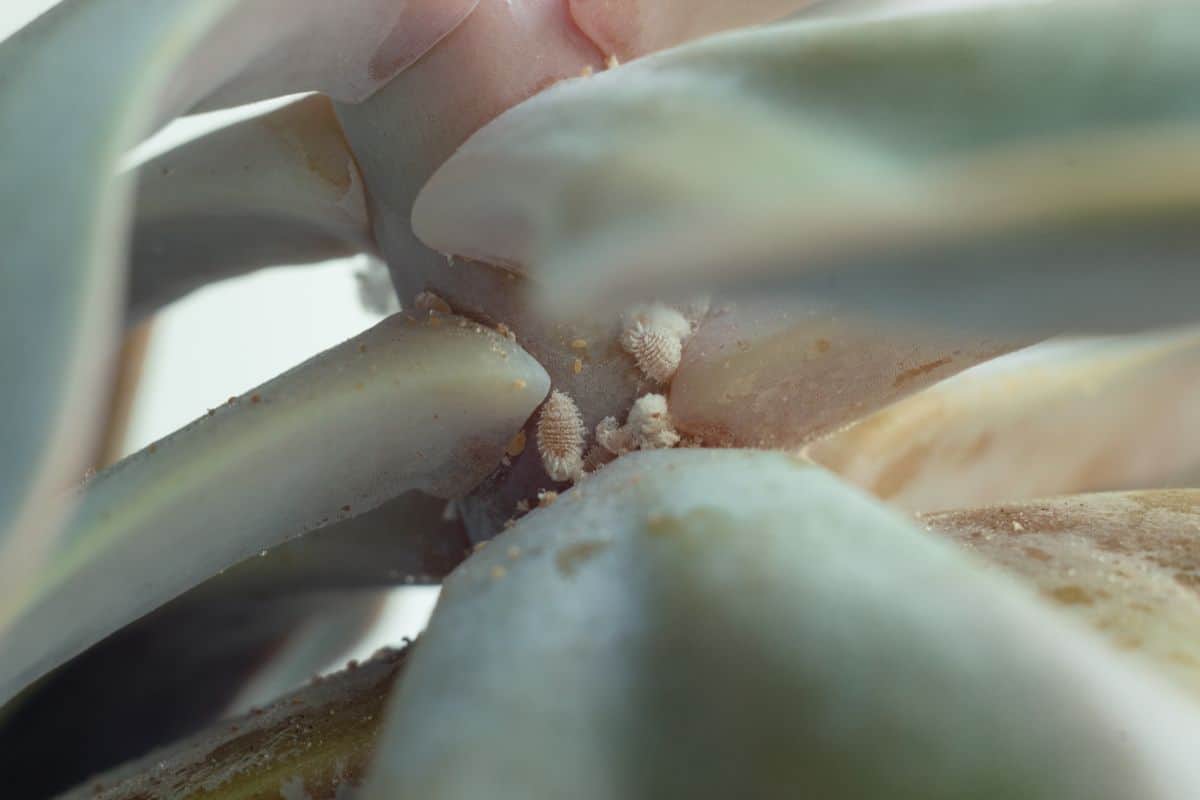
I was in the middle of my morning admiration session when I saw something disturbing. A little cottony fluff on the inner rosette of my Echeveria ‘Black Prince’.
There are a couple of things that could be the reason for that cotton on my plant, like wooly aphids, a spider egg sac, and spider mites, but none truly fits this cotton I found. We’ve covered dealing with the usual succulent pests in this article.
See Related Reading: Designer Succulents: Trademarks and Patents on Plants?
So the most likely candidate is mealybugs. Their cotton is a lot messier. And usually, when you find them, there's a lot of 'em.

This is a more typical infestation. And sadder.
I was lucky though. I caught it very early before it could spread.
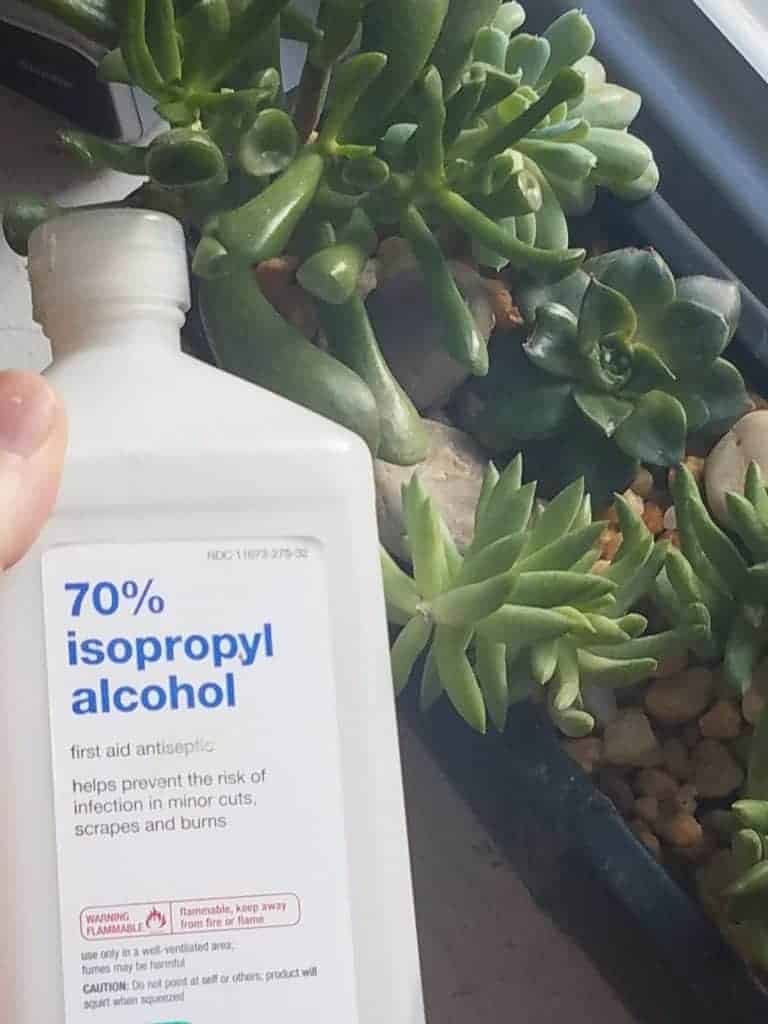
A little bit of alcohol.
Read Related Topic: Shipping Succulents: How to Mail Plants
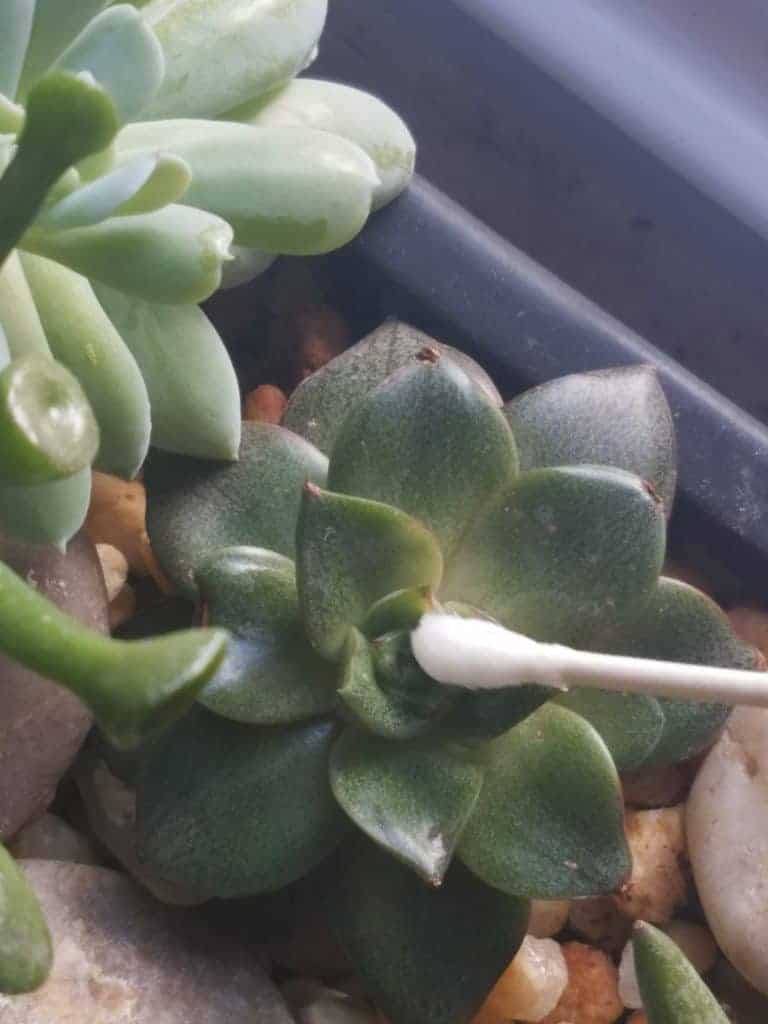
A little bit of Q-Tip. Problem solved.
Read Also: Echeveria vs Sempervivum
Jump to:
Mealybug Lifecycle
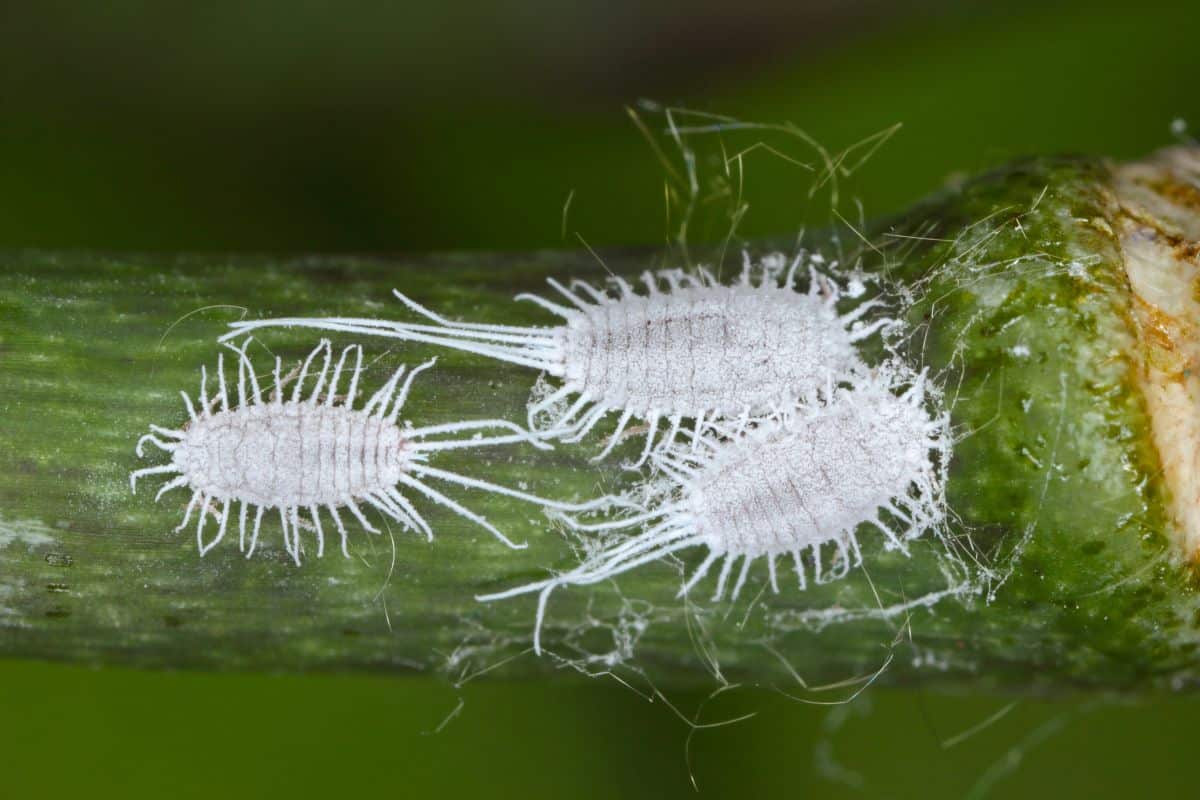
In order to do battle, it's important you know your enemy.
Mealybugs are a kind of scale insect. They’re unarmored and retain their legs throughout their whole life. They are called mealybugs because they secrete a white, powdery wax that helps protect them from potential predators.
Mealybugs love to live in warm, moist places. If you have an infestation, ensure that your plant is in a place with little humidity and doesn’t stay wet for long.
Interestingly, the mealybugs you see are either females or juveniles. The males have wings and don’t hang out on plants. They don’t even have mouths, actually. They live a short time for the sole purpose of mating. They also look completely alien to their female counterparts – more like wasps or flies.
Read Also: Succulent Hybrids Explained
How to Treat a Mealybug Infestation
No products found.
Fortunately, mealybugs aren’t very tenacious. There are lots of ways to get rid of them.
The first step, as with any infestation, is to quarantine the plant to prevent spread. After that, start your treatment with one of the following methods.
Water
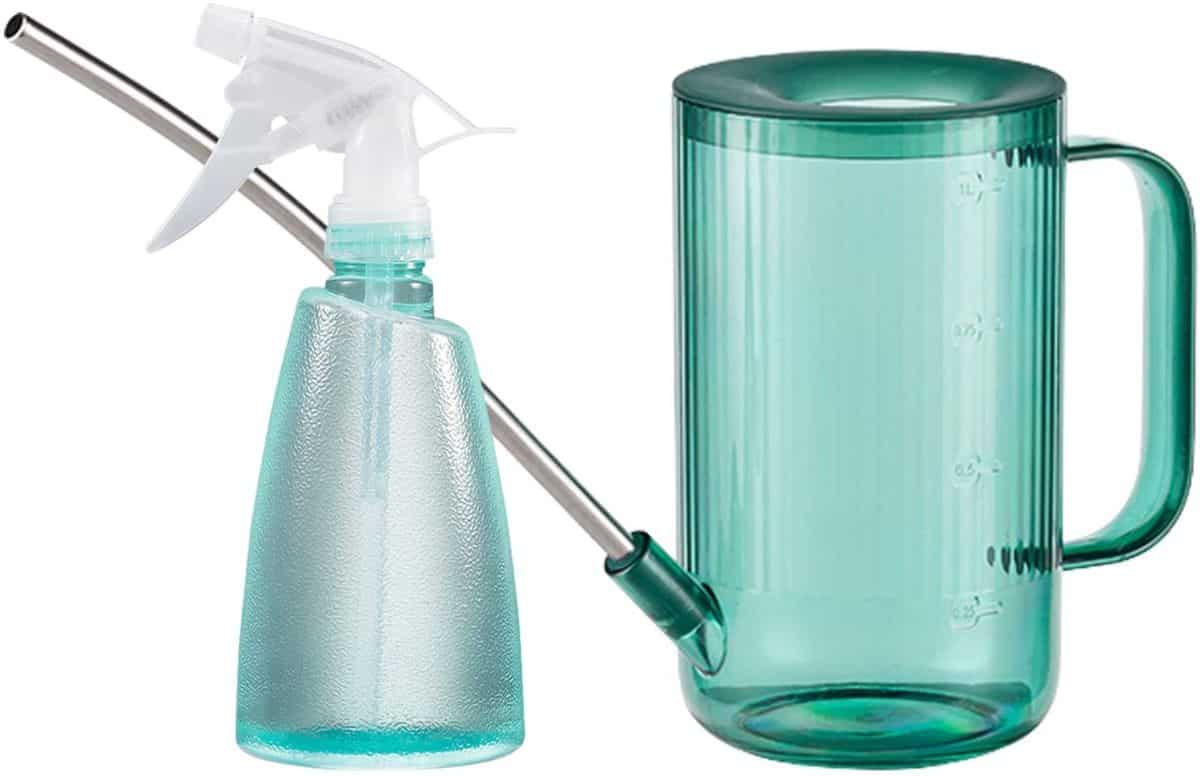
The simplest way, perhaps, is to use mechanical pressure. A high-powered stream of water will remove most adults and probably their eggs. A wash bottle, like the one pictured above, will help you get in those hard-to-reach places with some power. Rinse thoroughly and watch the plant carefully over the next couple of days to see if mealybugs reappear, then treat again. You may have to unpot the plant during this process to make sure it doesn’t drown. It’s OK to leave it out of the soil while you’re treating it.
Obviously, this works better on sturdier plants like agaves or cacti. Succulents with leaves that are prone to falling off are poor candidates for this procedure.
Read Related Topic: How to Get Rid of Spider Mites During Flowering
Isopropyl Alcohol
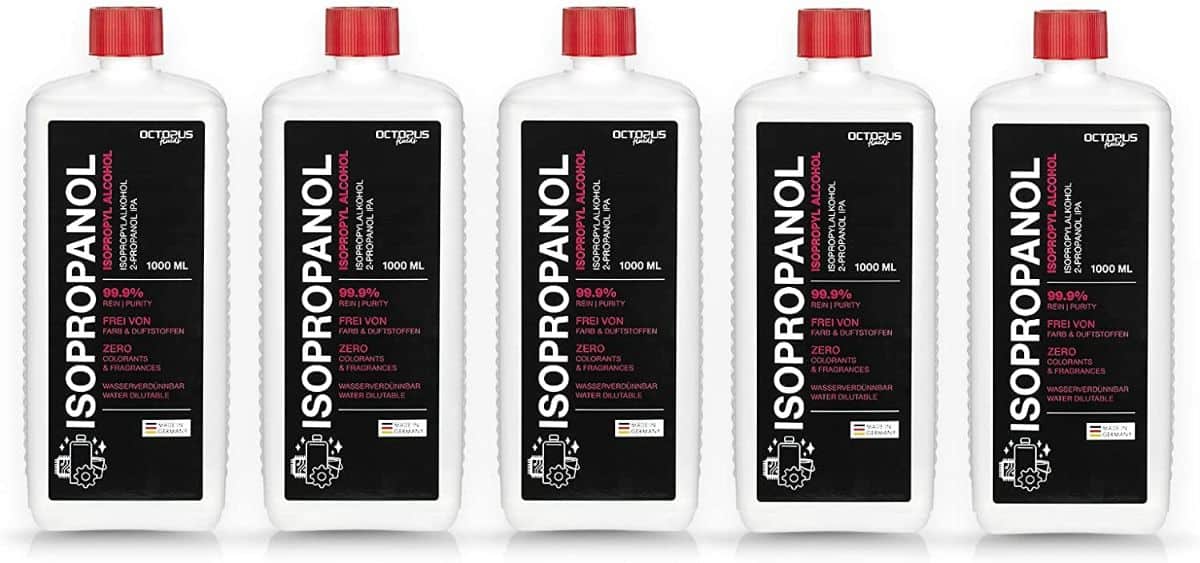
Rubbing alcohol, nail polish remover – whatever you’ve got, really. I used the 70% isopropyl alcohol I keep in the medicine cabinet. Applying this directly to the affected areas should clear it up quickly.
Most people recommend you use the alcohol at 50%-70% strength. That is more than enough to kill the pests, but won’t harm your plant.
Use a wash bottle like the one we talked about earlier to get those bugs in corners. Small infestations can be attacked by soaking a Q-Tip in the alcohol and giving it a little scrub. If the infestation covers a lot of the plant, use a spray bottle and just drown that bad boy. Alcohol evaporates quickly, so you don’t have to worry about the moisture hurting your plant.
Neem Oil
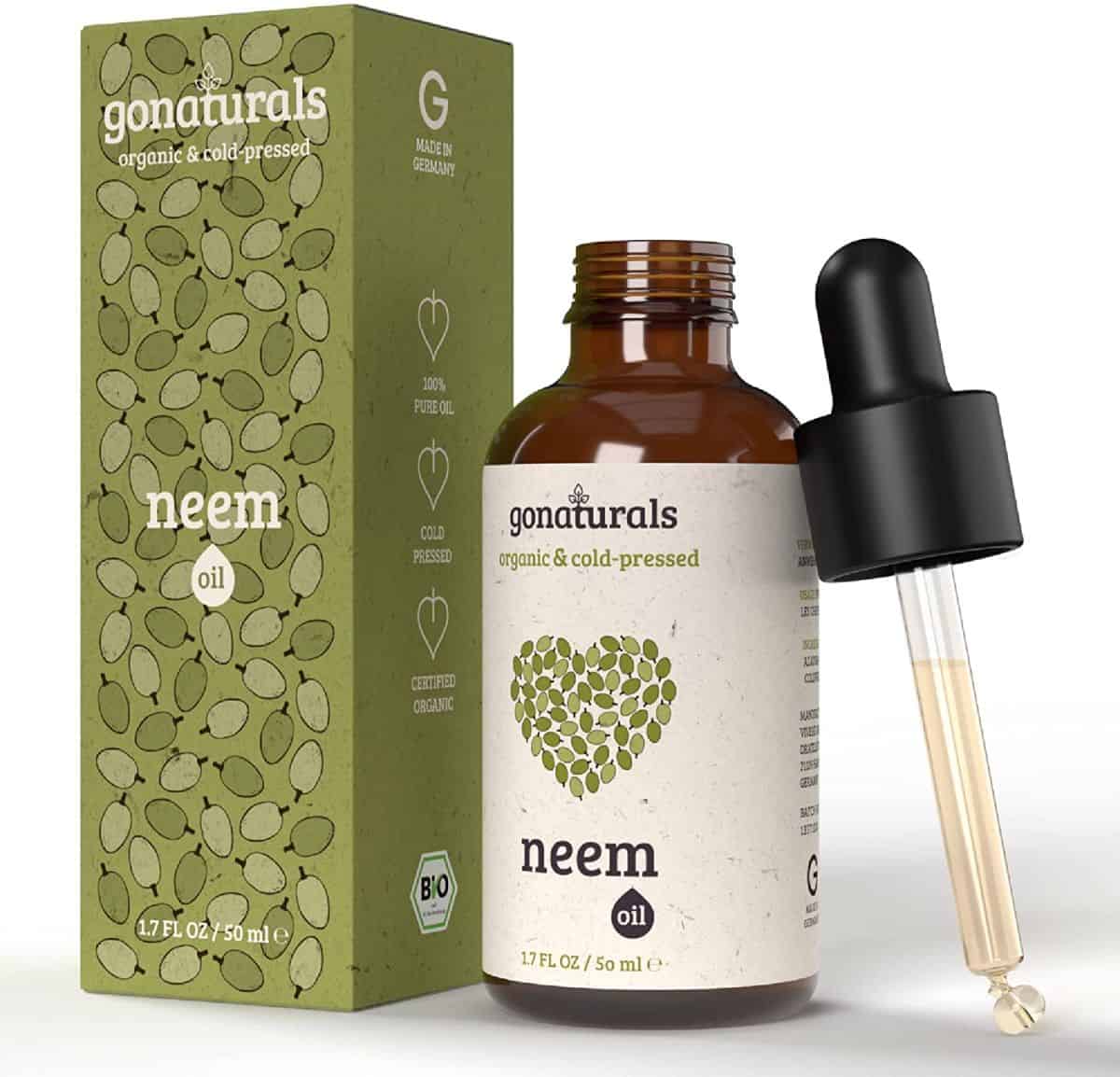
Neem oil is an antiseptic, anti-fungal, and anti-insect. It will not (directly) harm any of your plants either, which is awesome!
However, you have to use neem oil in a very specific manner. It needs to be diluted before use. Check the directions on your product, but it’s often something like 1 ounce of neem oil to 1 gallon of water. Note also that, as an oil, it tends to stick to things much longer than water. If you apply neem oil to your plants during the day, the combination of sun and oil will burn your plants.
Azamax
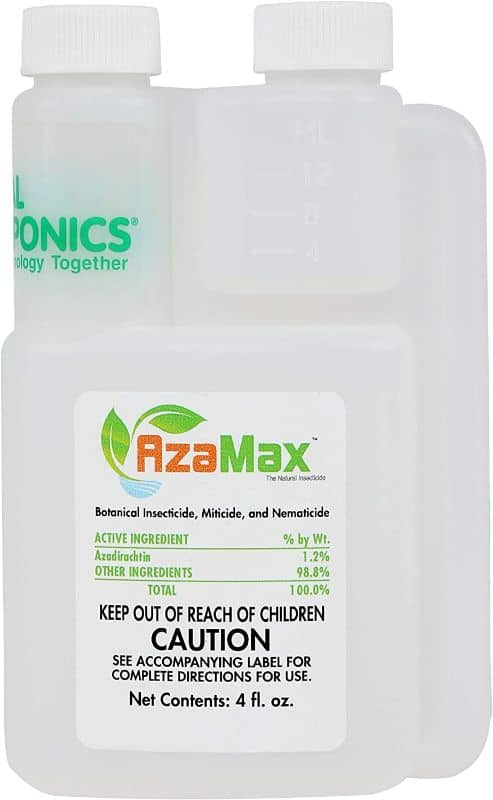
Azamax is the commercial pesticide version of neem oil. When using Azamax you don’t have to worry nearly as much about the effects of the sun on your treatment. Diluting will also be more precise.
Azamax is highly lauded as a safe pesticide that is highly effective. Remember, however, that pesticide effects can rarely be limited to one kind of pest. It’s lethal to many soft-bodied insects, so be cognizant of when and how you apply. Remember that neem oil and its derivatives, while not harmful to mammals at all, can hurt aquatic life.
Insecticidal Soap
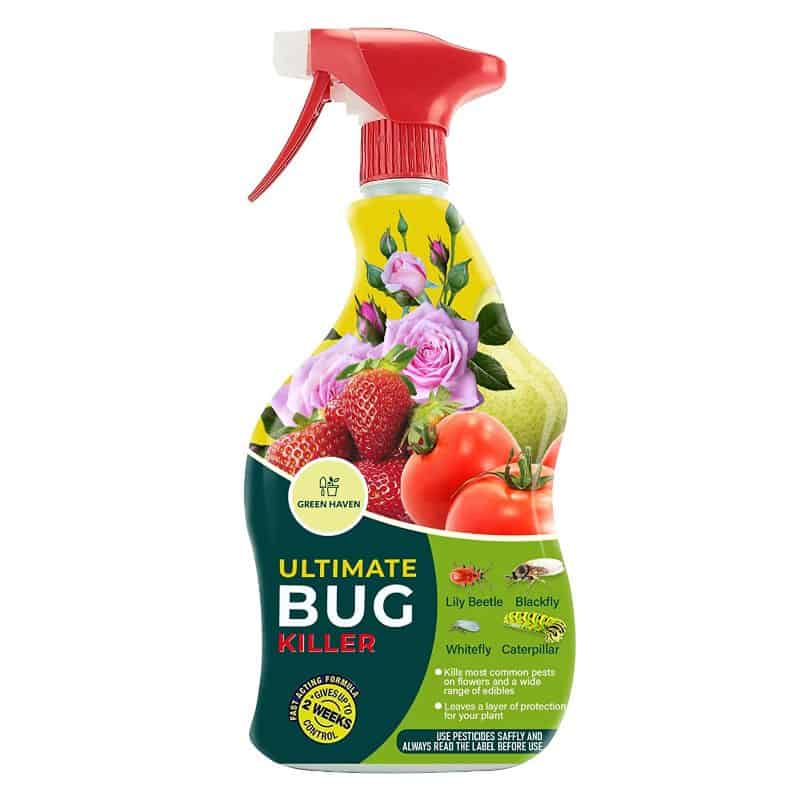
An old-fashioned remedy and these work well on many soft-bodied insects because the potassium salts of the fatty acid chains (soaps are made from animal fat or vegetable oil) wreak havoc on the cell membranes of the bugs.
With a low environmental impact, Sublime Succulents is happy to recommend commercial or homemade insecticidal soaps. To make your own, simply make a 2% solution of liquid soap. That’s about a (big) teaspoon in a quart of water. Be sure you’re not using dish soaps or detergents. That’s not real “soap”. Spray liberally on the plant, retreat every couple of days until the infestation is gone. Remember that this is oil-based, so avoid doing it in direct sunlight.
Biological Control
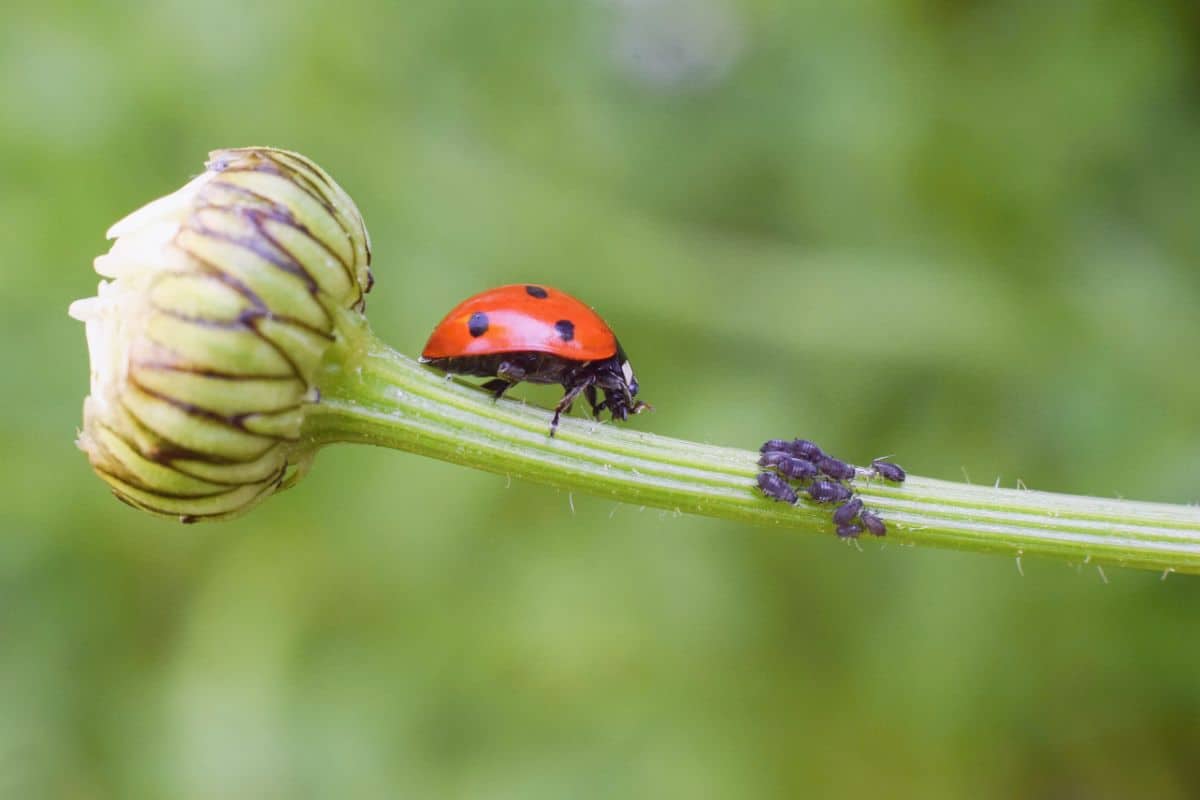
Of course, you could do it nature’s way – with predators. Mealybugs are a juicy snack for several other insects. You probably already know you can purchase live ladybugs for aphid control, but did you know they like mealybugs too?
Even better than your common ladybug is its close relative – which we have dubbed the mealybug destroyer. A few of these beetles on each infected plant will clear up the problem in mere days.
And it’s a low effort-solution too – you can buy these on Amazon. You shake a few out onto affected plants and let them work their magic.
If you decide to go this route, you’ll need to be aware of other bugs too, namely ants. Mealybugs, and other plant pests like aphids, secrete a sugary substance that ants really love. If ants find a bunch of mealybugs making this sugar water, they’ll often hang around and protect the mealybugs so they can continue to benefit. Those ants will kill a predator like ladybugs or mealybug destroyers. If you mealybugs have teamed up with ants, an insecticide is your best bet.
Hopefully one of these solutions helped deal with your mealybug problem! Which one worked for you? Tell us in the comments!


Celina
Hi Patrick! I’m hoping you see this! I have 6 different potted plants (6in pots) that are all infested with Mealybugs, I believe... I would love to chat and possibly send you a few pictures if possible. I just purchased some lady bugs... I plan to put them all in one area and release the ladybugs to start the cleaning, but I just have a few questions. 🙂
Patrick Grubbs
Feel free to ask your questions! Ladybugs do eat mealybugs, but I would probably consider it more of a preventative treatment, or maybe one for small infestations. If the plants are totally infested and you want to try and salvage them, you should probably be treating them daily with isopropyl alcohol or neem.